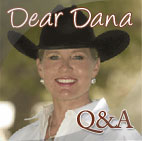Bergen, Smart Luck take NRCHA Derby in work-off
Defending champ Corey Cushing, Smart Boons in 2nd
 PASO ROBLES – Todd Bergen, who had too often found himself at the tough end of luck with Smart Luck, found himself in the best of places with the stallion June 20 when the fence work ended at the 2010 National Reined Cow Horse Association Derby.
PASO ROBLES – Todd Bergen, who had too often found himself at the tough end of luck with Smart Luck, found himself in the best of places with the stallion June 20 when the fence work ended at the 2010 National Reined Cow Horse Association Derby.
He was at the top of the Open Division.
But as fate would have it, he wasn’t alone there. Defending NRCHA Derby Open Champion Corey Cushing and Smart Boons (Peptoboonsmal x Smart Little Easter) were settled at the top, too, with an identical 664.5 composite score. Since both entries had identical 223 scores in finals fence work – used as the tie-breaker – there had to be a dramatic work-off. Bergen, who went second, scored a 221 to win with the 4-year old (Very Smart Remedy x Gunna Be Lucky), owned by Cable Creek Ranch.
Susie and Cantano take another Blenheim GP win
As the 15th pair to enter the ring, Hutchison and Cantano were the last to negotiate the first-round course without a fault and advance to the jump-off. The duo joined the company of Australian Harley Brown and Cassiato (Oak Park Group LLC, owner), Joie Gatlin and Camaron Hills Quick Dollar (Camaron Hills Farm, owner), and Lane Clarke aboard McLord’s First John (Mickey Hayden, owner).
Jenny Karazissis, Martel top $10,000 USHJA Hunter Derby
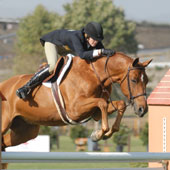
Jenny Karazissis and Martel win the $10,000 USHJA Hunter Derby on June 12 in San Juan Capistrano.
Jenny Karazissis piloted Martel (Star Lane Farms, owner) with poise, winning both rounds for the top prize. The first round included 11 efforts, with four 4-foot options. The course flowed smoothly without many trouble spots, although quite a few rails fell and knocked out several top horses from the ribbons.
Since this was a 2010-11 qualifying class, new rules were in effect. Each 4-foot option jumped resulted in a point awarded, so up to four points were added to both sets of judges’ scores.
Young amateur Melissa Doddridge, who had three entries in the class, went early on Best Man and scored a total of 179 and the lead until reigning champion, Crown Affair with John French in the irons, went 12th and scored 181. Several horses tied in points. Forbes (Tonia Cook Looker, owner), a top Derby mount piloted by Jenny Karizissis, tied with Doddridge and Best Man at 179. Bentley, also ridden by Doddridge, and Two Goals Farm’s On Top with Keri Kampsen both earned 178.
Endicott and S.F. Shakira Reign in the $30,000 Blenheim June Classic Grand Prix
Tenth to go in the order, Endicott and his white mount were the second pair to have a fault-free trip in the first round, following Susan Hutchison and her partner, El Dorado 29’s Cantano, who were the first to go clean.
With rails falling in every round following, it appeared as if the jump off would consist of only two horses, until the second-to-last entry, Maurice Beatson and Apollo Van Evendael, went clean.
Horse Expo 2010
The 12th Western States Horse Expo came to Cal Expo in Sacramento June 11-13, and high moments were provided by the hospitality of All Tech, sponsors of the 2010 All Tech FEI World Equestrian Games, at the Lexington-like “All Tech Village, and also by Ron Emmons, who rode to the title on Olena Oak and was reserve on Matt Dillon Dun It at the Magnificent 7 Friday night. An informal survey of vendors resulted in varied reviews of the Mane Marketplace, but the Horsertader booth on Sponsor Row was kept alive with daily Q&A sessions with columnists Ray Ariss (“Hey Ray!”) and Dana Hokana (“Dear Dana”), as well as the Horsetrader crew.
California cutters honored with NCHA Hall Of Fame induction
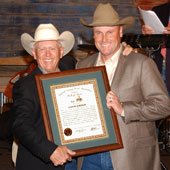
Gavin Jordan of Wilton receives his NCHA Hall Of Fame Open Rider award from Chubby Turner, 2009-10 NCHA President.
The ceremony was part of the NCHA Annual Convention held June 18-20 at the Hilton DFW in Grapevine, Texas. Entry in the NCHA Open Rider Hall Of Fame is based on earnings of more than $1 million or by winning a combination of designated events. Joining Jordan and Costello were three other riders, including Zeke Entz of Collierville, Tenn., Sean Flynn of Weatherford, Texas, and Lee Francois of Murchison, Texas.
New inductees to the NCHA Members Hall of Fame included Judy Burton Armstrong, of Gladewater, Texas; Bobby Cook, of Port Allen, La.; Carolyn Crist, of Fort Worth, Texas; Don Neuenschwander, of Houston, Texas; Dave Robson, of Calgary, Alberta; and Mike Wells, of Houston, Texas.
Fourteen horses sold at UC Davis production sale
Equine facilities supervisor Joel Viloria said six yearlings, a pair of yearling mules, two Warmblood/Thoroughbred cross weanlings and two broodmares were sold at a sale average of $550. The sale-topper brought $875.
“It’s a low sale compared to what we’ve had in the past, but it’s a tough time,” said Viloria.”On the bright side, the horses and the facility looked great.”
Lateral Flexion — Here’s the first exercise
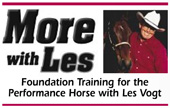 Next in a series
Next in a series
After reviewing our foundation last issue, we look at an important exercise for flexion.
Basic Steering
Even if you have a trained horse that you’ve ridden for years, it’s important that you don’t skip this section. If you’re tempted, ask yourself these questions:
(1) When I start to pick up one rein, does my horse start to give his nose BEFORE I’ve taken all the slack out of that rein?
(2) When my horse turns his head in response to rein pressure, does he bend his whole neck and keep his head more or less perpendicular to the ground and level with his withers, or does he twist his neck and just stick his nose toward the direction I’m pulling him?
First Wright Quarter Horses Production Sale is coming July 10
If you are keeping an eye for top performance horses for sale, there’s a sale July 10 at the 101 Livestock Market along Highway 101 between Salinas and San Juan Bautista that you don’t want to miss. The inaugural Wright Quarter Horse Production Sale starts at 5 p.m. Saturday afternoon, with a preview scheduled from 1 p.m. to sale time, and a barbeque from 4-6 p.m. Ranch horses, rope horses, reined cow horses and finished cutting horses – including well-started Snaffle Bit Futurity prospects — will will be sold. You’ll also find beginner, kids and high school rodeo horses – well-bred registered AQHA and APHA mares, geldings and stallions. For more information, contact Justin, Walter or Sharon Wright at the ranch (831) 623-4281 or on the cell phone (831) 801-0322, and be sure to see the ad on page 26.
Canter too fast? Make the choice `his’
HEY RAY!: How do you get a “chargey” Mustang to rate at the canter? Mine does everything well at the walk and trot, just not the canter.
–Dennis Parker, Zamora Calif.
HEY DENNIS: The good news is you have 66 percent of your horse under control! I assume you didn’t have a stuck accelerator issue with the other two gaits. If you did, I would simply advise you to use the same approach and technique for the canter. The simplest way to get your horse to understand that racing at the canter is something he can do — but not necessarily a good idea — is to allow him to lunge around you at whatever speed he chooses until he slows down. The keys here are:
A. Be sure you don’t encourage or motivate him to move in any way unless he breaks out of the gait. (This means hands down, quiet and little-or-no foot movement at all.)
B. If and when he breaks, remember to jump start him back into the canter assertively and then back off immediately to a passive state on your part.
It’s important to recognize that when the horse breaks out of the canter, it is actually a good thing in this situation. The horse realizes that he can canter at any speed, but he is now aware that his choice is also taxing on him. If you purposely try to correct his speed, you run the risk of making him nervous and therefore introducing adrenaline into the mix. Because horses run away from their fears, you the rider/handler become the reason for the problem.
What we are achieving with this exercise is an encouragement to the horse to make choices that are smart and in his best interest. The horse will recognize that if he is going to be cantering for a while, (in the horse’s mind, possibly forever) the smart choice would be to pace himself, introducing the concept of being efficient. The horse will almost feel like he’s cheating the system by slowing the canter down to almost nothing because he really doesn’t know what speed we want him to go. He is motivated to stay in the canter and not break simply because he sees value in keeping you, the handler, still. In the horse’s mind, you are not controlling him; he is controlling you. The slowing down becomes his idea as a way to cope with his rapid diminishing level of energy, and as a result the horse will learn a second important lesson with this exercise: “COMMITMENT TO THE GAIT”.
At this moment, the horse will have learned the value of working “smart” as opposed to working “hard” –- this happens because he learns consciously on his own instead of as a result from a reaction while confused and afraid. Your horse will soon appreciate the options given to him by you and the time that he needed to figure this out without negative consequence. This will only strengthen the bond in the relationship between you and your horse. This is a perfect example of applying the S.W.A.P. (Sweet, Willing And Predictable) approach that is based on the opportunity to reward — not to punish. The moment you perceive the effort on the part of your horse to continue to canter as slow as he can — especially when he looks like he’s ready to break at any moment but doesn’t — is when you should transition him to the walk or halt. This is a great time to walk up to him and reward him any way you like.
Now that the horse understands that cantering slow is not only valuable to him but also to you, he will gladly slow down the canter when you request it.
Practice this exercise several times, from what I like to call an “idling canter” to the walk or trot, until it seems effortless to your horse.
Now it’s time to reverse your horse and start all over again. As soon as your horse is equally clear about what he should do mentally as well as physically on both sides, it’s a good idea to introduce a rider to this lunging experience. Take note: This approach does not only slow down the gait, but also the horse’s mind. Not only will this give the horse confidence in what he is doing, but in you, too.
The idling canter that you will teach your horse to commit to is, in essence, more difficult to do than moving fast. It is the difference between you climbing down a rope slowly or doing it quickly. When you do it slowly, you require more focus, strength, coordination, stamina and character needed to endure the burn. Your horse is also going through the same experience. Because your horse is learning to slow down and travel on a loose rein without being pulled on, in this lunging exercise, we want to carry this over to your riding as well. Once you feel that you are ready to try this exercise under saddle, you should make sure that your walk and your trot are rated consistently to the level of your standard. If not, simply flex your horse down to a halt until he totally stops, stands quietly, and gives to the rein. Let him stand on a loose rein for a couple of seconds before starting up again. Continue this process of going through the gaits and evaluating how well your horse is rating himself on a completely loose rein. Allow the horse to break into the next gait before flexing to a stop. By the time you get to the canter, you will understand the importance of teaching him how to idle at the canter first. You will be simply asking him not only something he now clearly understands, but something that he sees value in as well. If you find him going faster than you wish or feel threatened in any way, simply flex to a stop like you did in the other gaits and give him another chance.
Don’t try to help rate your horse in any way until he learns to rate himself through this approach. The best way to empower your horse and elevate the appreciation he has for you will be through: (a) the suggestions you share with him and (b) the freedom of choice you offer to accept them. Dennis, there is a formula here in this exercise that may be useful in other situations if you think about it long enough. It is only limited to your own creativity and application. Enjoy the process, but above all, trust your instincts and think safe!
RAY
Horsetrader columnist Ray Ariss, husband to Pippa Ariss and father of six, shares his insight into the relationship of horseand human twice each month, in print and on www.horsetrader.com. He lives and trains in “Horsetown USA”, Norco, Calif., at his bustling Starbrite Riding Academy, where he currently has 50 horses in various stages of training, including Andalusians, Friesians, Quarter Horses, Paints, Thoroughbreds, Arabs, Mustangs and more. Ray attributes his training success to the support of his wife and partner, Pippa, and a system he calls S.W.A.P., to which he credits his multiple championships in several disciplines. His passionate understanding of the “human-horse” relationship was evident when he took on the challenge of training a wild Mustang and — in just 100 days — produced the highest-priced adopted Mustang ever — $50,000. Does your “horse-human relationship” leave you with a question for Ray? Click here to submit one!


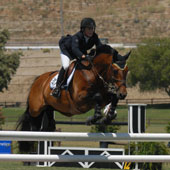
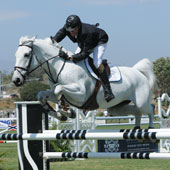
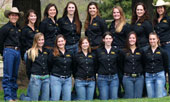
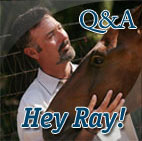
 Read Columns
Read Columns
